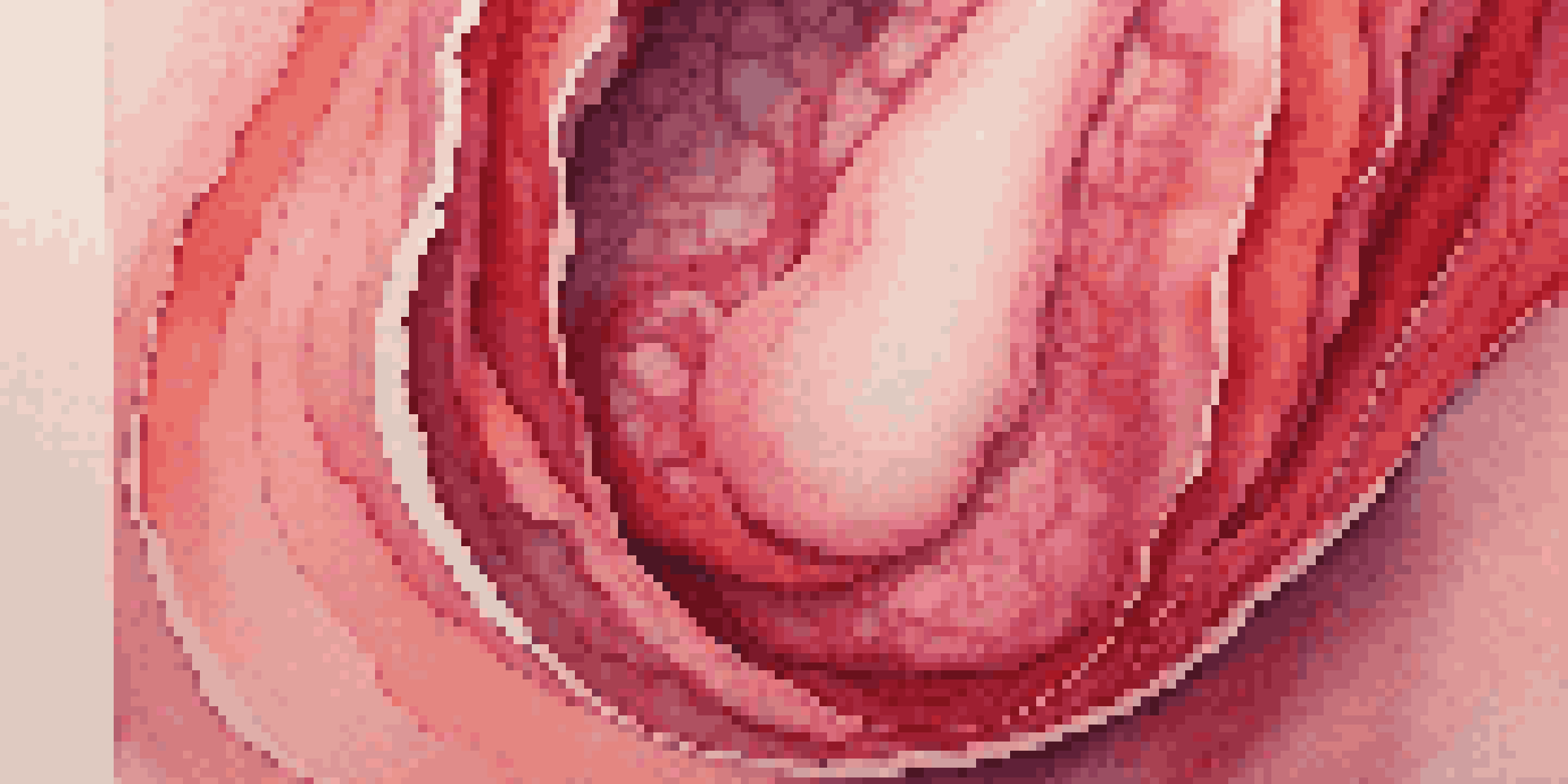Understanding the Role of the Uterine Lining in Fertility

What is the Uterine Lining and Its Functions?
The uterine lining, also known as the endometrium, is a crucial component of the female reproductive system. It undergoes cyclical changes throughout the menstrual cycle, preparing for a potential pregnancy each month. This lining thickens in response to hormonal changes, primarily estrogen and progesterone, creating a nurturing environment for a fertilized egg.
The health of the endometrium is crucial for successful implantation and a healthy pregnancy.
If fertilization occurs, the uterine lining supports the embryo's implantation and growth, providing essential nutrients. Conversely, if there's no pregnancy, the lining sheds during menstruation, marking the start of a new cycle. This cyclical pattern emphasizes the importance of the uterine lining in reproductive health.
Understanding the role of the uterine lining helps women recognize its significance in achieving and maintaining pregnancy. Problems with the lining can lead to fertility issues, making it essential for women trying to conceive to be aware of its health.
How Hormones Regulate the Uterine Lining
Hormones play a pivotal role in regulating the uterine lining. Estrogen, produced by the ovaries, stimulates the growth of the endometrium during the first half of the menstrual cycle. As ovulation approaches, a surge in luteinizing hormone (LH) triggers ovulation and the subsequent production of progesterone.

Progesterone is crucial for preparing the uterine lining for potential implantation. It transforms the thickened lining into a rich, nutrient-filled environment, ready to support a developing embryo. If pregnancy does not occur, progesterone levels drop, leading to the shedding of the lining during menstruation.
Uterine Lining Supports Pregnancy
The uterine lining, or endometrium, thickens each month to create a nurturing environment for a fertilized egg, playing a crucial role in reproductive health.
This hormonal interplay highlights the delicate balance required for a healthy uterine lining. Any disruption in hormonal levels can affect the lining's ability to support pregnancy, underlining the importance of hormonal health in fertility.
The Importance of a Healthy Uterine Lining
A healthy uterine lining is vital for successful conception and pregnancy. It not only needs to be the right thickness but also exhibit proper receptivity for embryo implantation. An underdeveloped or overly thick lining can pose challenges for fertility, leading to potential implantation failures or miscarriages.
Understanding the hormonal balance is essential for women's reproductive health.
Women with conditions like polycystic ovary syndrome (PCOS) or endometriosis may experience abnormalities in their uterine linings. These conditions can interfere with hormonal balance and affect the lining's structure and function, further complicating the journey to conception.
Regular medical check-ups and monitoring can help identify any issues with the uterine lining. Understanding its health can empower women in their fertility journey, allowing them to seek appropriate interventions when necessary.
Common Disorders Affecting the Uterine Lining
Several disorders can impact the uterine lining and, consequently, fertility. Endometriosis is one such condition where tissue similar to the uterine lining grows outside the uterus, often leading to painful symptoms and fertility challenges. This misplaced tissue can disrupt the normal hormonal balance and influence the uterine environment.
Another common issue is uterine polyps, which are growths on the uterine lining that can interfere with implantation. These polyps can sometimes cause irregular bleeding and must be monitored or removed to improve fertility chances.
Hormones Regulate Uterine Health
Estrogen and progesterone are essential hormones that manage the growth and maintenance of the uterine lining, affecting its ability to support pregnancy.
Understanding these disorders is crucial for women facing fertility challenges. Early detection and treatment can significantly improve the chances of conception and support overall reproductive health.
Diagnostic Tests for Uterine Lining Health
To assess the health of the uterine lining, healthcare providers may recommend various diagnostic tests. One common method is a transvaginal ultrasound, which allows doctors to visualize the lining's thickness and texture. This non-invasive procedure provides valuable insights into its condition.
Another useful test is a hysteroscopy, where a thin tube with a camera is inserted into the uterus to examine the lining directly. This procedure can help identify abnormalities such as polyps or fibroids, which may hinder fertility.
These diagnostic tests play a critical role in understanding uterine health. By identifying potential issues early, women can take proactive steps toward addressing them and improving their chances of conception.
Lifestyle Factors Affecting the Uterine Lining
Lifestyle choices significantly influence the health of the uterine lining. A balanced diet rich in vitamins and minerals supports hormonal balance, which is essential for a healthy endometrium. Foods high in antioxidants, such as fruits and vegetables, can also promote overall reproductive health.
Regular exercise plays a role too, as it helps maintain a healthy weight and reduces stress, both of which can positively impact hormonal levels. However, excessive exercise can have the opposite effect, potentially disrupting hormonal balance and affecting the lining's health.
Lifestyle Impacts Uterine Lining
Healthy lifestyle choices, including diet and exercise, significantly influence the condition of the uterine lining, impacting fertility.
Additionally, avoiding smoking and limiting alcohol intake are crucial steps for maintaining a healthy uterine lining. These lifestyle factors can significantly influence fertility, making them important considerations for anyone trying to conceive.
Medical Interventions to Support Uterine Lining Health
For women facing fertility issues related to the uterine lining, several medical interventions can provide support. Hormonal therapies, such as estrogen and progesterone supplements, may help regulate the menstrual cycle and promote a healthy lining. These treatments aim to create an optimal environment for embryo implantation.
In cases of structural issues, such as polyps or fibroids, surgical options may be recommended. Procedures like hysteroscopic polypectomy or myomectomy can remove these growths, improving the chances of a successful pregnancy.

Consulting with a fertility specialist can help women determine the most appropriate interventions for their unique situations. Tailored medical support is vital for enhancing uterine lining health and improving fertility outcomes.